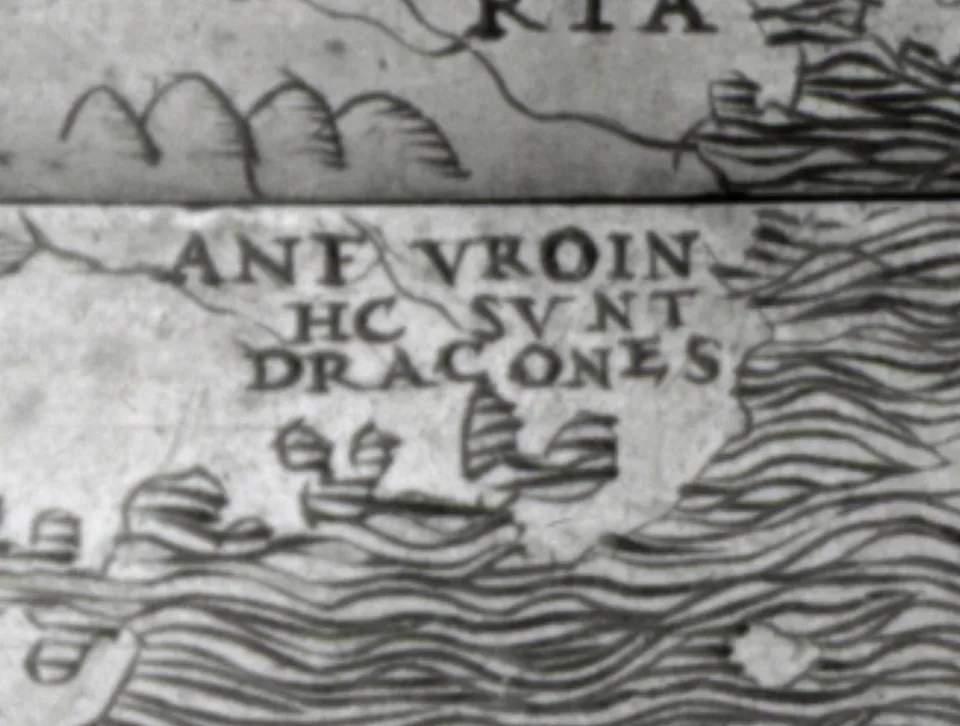According to a common stereotype, white spots on ancient European maps were usually denoted by the Latin phrase Hic sunt dracones. We checked whether this practice was really popular.
The phrase about dragons has long become synonymous with another Latin phrase, terra incognita (“unknown land”) and is often used out of context. For example, in 1963, in the Harvard University Press The Correspondent noted: "The prospect is that unless present policies are reversed and new bills are rejected, the President will become like a medieval cartographer, armed with the power of government coercion, arbitrarily but effectively signing even large portions of the globe with the words Hic sunt dracones." The phrase is defined in a similar way in Soviet publications "Essays on the history of natural science and technology" And "Philosophy, natural science, social development". It is widely used in works of art, including TV series "Star Trek" And "Staying Alive", series of novels by Terry Pratchett "Disk World" and Henry Lyon Oldie "Savages of the Ecumene". In a computer game Grand Theft Auto: Chinatown Wars this phrase meets the hero every time he tries to reach one of the corners of the map by sea.
Many centuries ago, the boundaries of what was known on Earth included a relatively small part of its surface, be it land or sea. The notorious terra incognita, like counts, which first appeared in Claudius Ptolemy's Manual of Geography around 150 AD. e. to designate a vast area in the south, disappeared from maps only in the 19th century. And for most of this range, the art of cartography reflected the fears and beliefs of its time. The awe of the power of natural elements was projected onto cards in the form of fantastic figures, in particular sea monsters. These Scylla and Charybdis of their era simultaneously represented exquisite decorative elements, dubious zoological facts, and, in our days, valuable evidence of the ideas of Europeans. Several maps have reached us on which we can see dragons. Among them:
- Map from the Psalter early 1260s. Dragons as symbols of sin are at the bottom of the image, balancing Jesus and the angels at the top, but outside the actual card.

- On Borgia map (circa 1430) in the region of India one can see dragon-like figures, and under them the text: “Hic etiam homines magna cornua habentes longitudine quatuor pedum, et sunt etiam serpentes tante magnitudinis, ut unum bovem comedant integrum” (“Here also there are people with huge four-foot horns, as well as snakes so large that they can eat a whole bull").
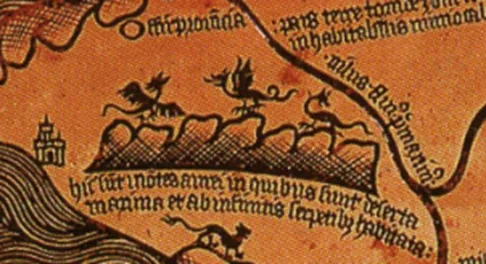
- On the map Fra Mauro (circa 1450) depicts the fictional Dragon Island in the Atlantic Ocean. And an inscription near Herat in modern-day Afghanistan reports that in the nearby mountains “there are several dragons, in whose foreheads there is a stone that heals many ailments,” and describes the way the local residents hunt these dragons.

- On the Japanese map Jishin no ben (XIX century) the world is surrounded by ouroboros - a dragon that bites its tail and causes earthquakes.
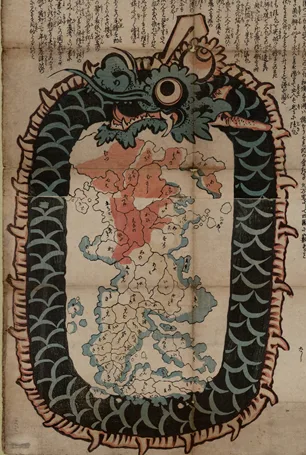
As we see, dragons appeared on some ancient maps, but even in meaning and location they did not replace the mark “Hic sunt dracones” that interests us. But what about the text itself? Indeed, such a map, or rather a globe, exists.
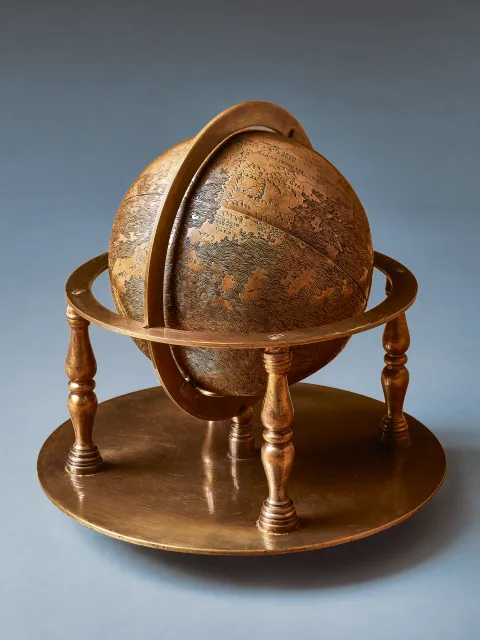
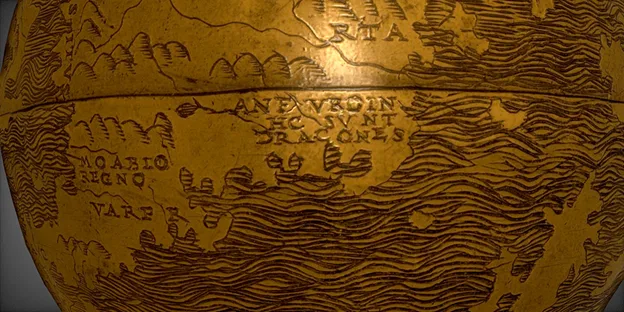
We're talking about copper Hunt-Lenox globe - the third oldest currently known globe, dating from around 1508. The inscription “Hc Svnt Dracones” is located in the very southeast of Asia, in the area of modern China or Indonesia. Since this region was already well known to Europeans, there are two main versions of the meaning of the inscription:
- speech Maybe go about the Komodo dragons, or komodo dragons;
- back in the 19th century, when the globe was discovered, it appeared assumption, which refers to a certain Asian kingdom of Dagroyan, described Marco Polo.
Oddly enough, until 2012 this product was the only known ancient monument on which the text of interest to us could be found. However, ten years ago, humanity discovered globe, made from two halves of an ostrich egg and which apparently became the prototype of the Hunt-Lenox globe, since they are identical, and the dating of the “ostrich” globe is slightly older. At the same time, there is a well-founded hypothesis that it was created by Leonardo da Vinci.
Moreover, it can be noted that the text “Hic sunt dracones” (or “Hc svnt dracones”) until the end of the 19th century, when the first description of the Hunt-Lenox globe appeared, not found in no way literature, which did not prevent this fact from becoming a popular legend in the 20th century. The classic detective Dorothy Sayers had a hand in its dissemination, who in 1928 mentioned the inscription "on an old map" in his story "Lord Peter Inspects the Body". Sayers professionally studied Renaissance literature, but it seems that she was not an expert on the geographical side of the issue, unlike her colleague Umberto Eco. The latter in two of his novels at once ("Name of the Rose" And "Baudolino") cites in a similar context the Latin phrase “Hic sunt leones” (“Here are the lions”), which was indeed quite common on ancient maps and referred specifically to unknown lands. And fans of the work of Victor Hugo may remember this expression in his novel "The Man Who Laughs": “On geographical maps of the 15th century, a large unnamed space was depicted in the corner, on which three words were inscribed: “Hic sunt leones” (“Here live the lions” - lat.). There are similar unexplored areas in the human soul. Somewhere inside us passions are agitated and seething, and about this dark corner of our soul we can also say: “Hic sunt leones.”
It was this expression that apparently became the prototype of the phrase “Hic sunt dracones”, popular today in works of art, which in fact is found only on two identical globes, and, presumably, in a slightly different context.
Cover and inside images: Wikipedia
Mostly not true
Read on topic:
No Old Maps Actually Say "Here Be Dragons"
If you find a spelling or grammatical error, please let us know by highlighting the error text and clicking Ctrl+Enter.


